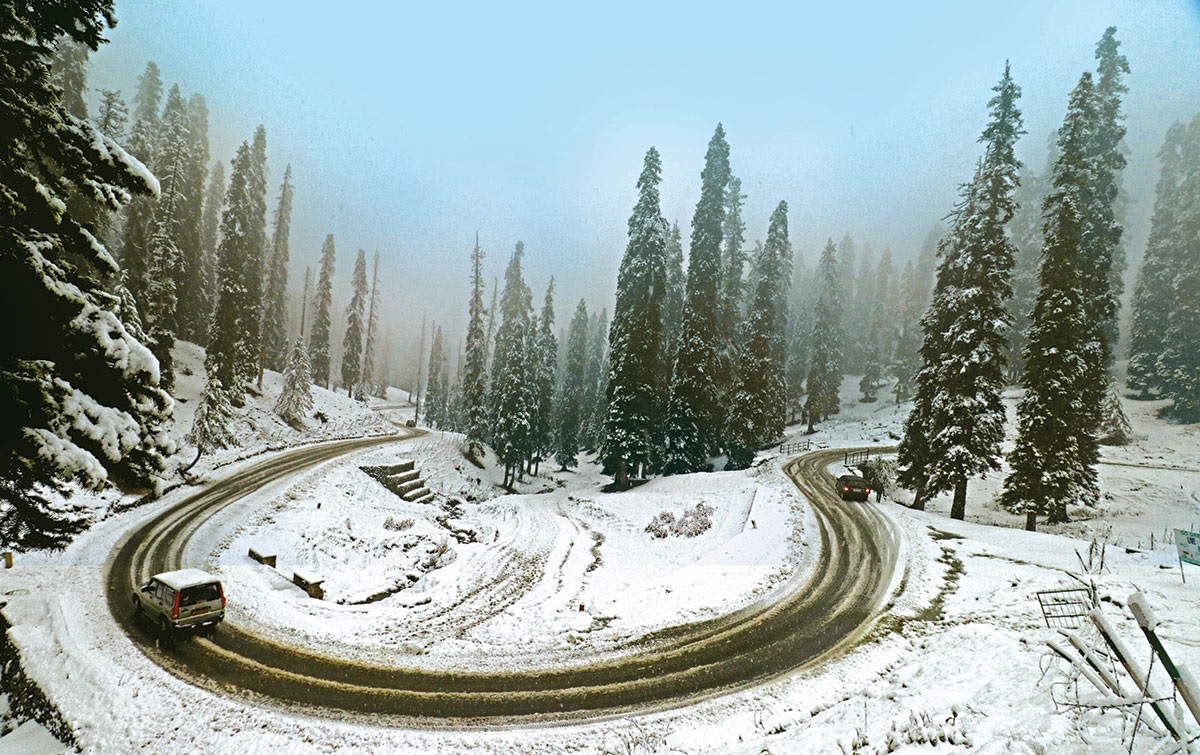Once planning and managing the mountain treks for foreigners, Kashmir is now home to a new generation that treks deep into Pir Panchal and Harmukh mountains for passion and escape from the crowd. These include many young women as well. Babra Wani met some of the trekkers to understand the rise of new adventures in vogue
Hunting, trekking deep into mountains and locating and mapping glaciers has remained a small sub-sector of Kashmir’s vibrant tourism sector for a very long time. Some Kashmir hunting guides and trekking managers have become part of history for their exceptional expertise in the last around 200 years.
All those people were professionals, working for foreigners to make some income. While this was an established sub-sector of tourism, the natives for various reasons never indulged in these activities. It is this trend that is changing now.
As the sun sets over the jagged peaks of Pir Panchal, Harmukh and other Himalayas in Kashmir, the allure of trekking summons a new generation of adventurers, united in their quest to conquer the mountains and reconnect with nature’s splendour. In the land of ethereal beauty, the spirit of exploration soars high, transcending borders and inspiring souls to embrace the call of the wilderness.
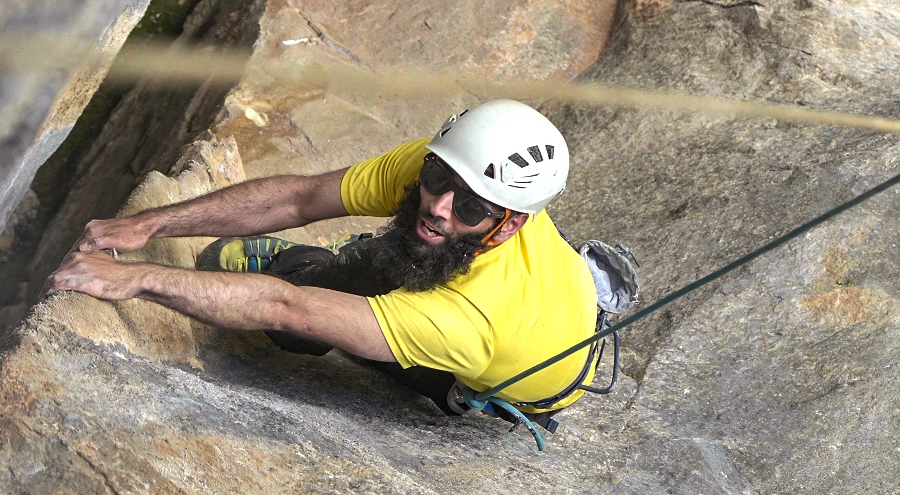
Thajiwas Trek
Kashmir’s Thajiwas glacier peak was first ascended by two English mountaineers, John Jackson and John Buzzard, 78 years ago. After many trekkers scaled it, it was last in news when two Kashmiri boys, Zeeshan Mushtaq and Faisal Wani, scaled it in July 2023. Unlike Zeeshan, Faisal stopped 100 meters from the summit.
Not their scaling the summit, it was the rescue of the two mountaineers during their descent that made headlines. Thajiwas once was a huge glacier that has skirted over the time, partly by biotic interventions and partly because of climate change.
The surface and weather conditions became adverse while the two were descending, resulting in injuries to both Zeeshan and Faisal. The Indian Air Force (IAF) rescued the duo. “Our success was not reported, but the news about the rescue was highly circulated,” Zeeshan recalled.
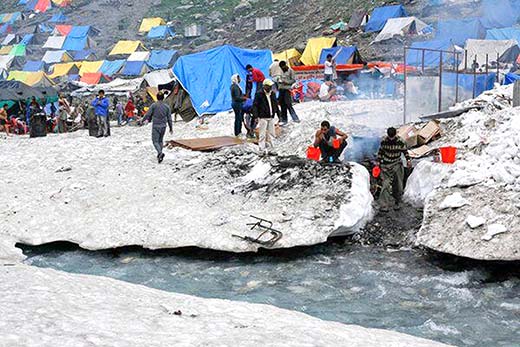
A Shehr-e-Khas resident of Srinagar, Zeeshan Mushtaq, 23, is a student of BTech in Electronics and Communication at the University of Kashmir. He started trekking in 2018, but it was in 2020 that he took it seriously.
Since then, he has covered almost 100 alpine lakes. “My journey is still going on,” he said. “I have mapped Kashmir’s trekking trails and hiking routes, and I have also compiled two digital guidebooks.” He also runs a blog where he writes about his trekking expeditions. Fond of trekking since childhood, he found a platform when his friend introduced him to the trekking club.
Zeeshan has become one of the most accomplished trekkers in Kashmir. He is not a part of any group and prefers to do everything on his own. He has done solo hiking for four days, from Banihal to Kulgam.
The Great Lakes Trek
In Kashmir, trekking till recently was an all-foreigner domain. While the resident professional guides would arrange the treks, their involvement would be restricted to the earnings alone. In the past decade, however, the trend is shifting. Resident trekkers have increased dramatically, with both men and women now engaging in adventure. The discovery of the Great Lakes Treks has boosted the trekking sector.
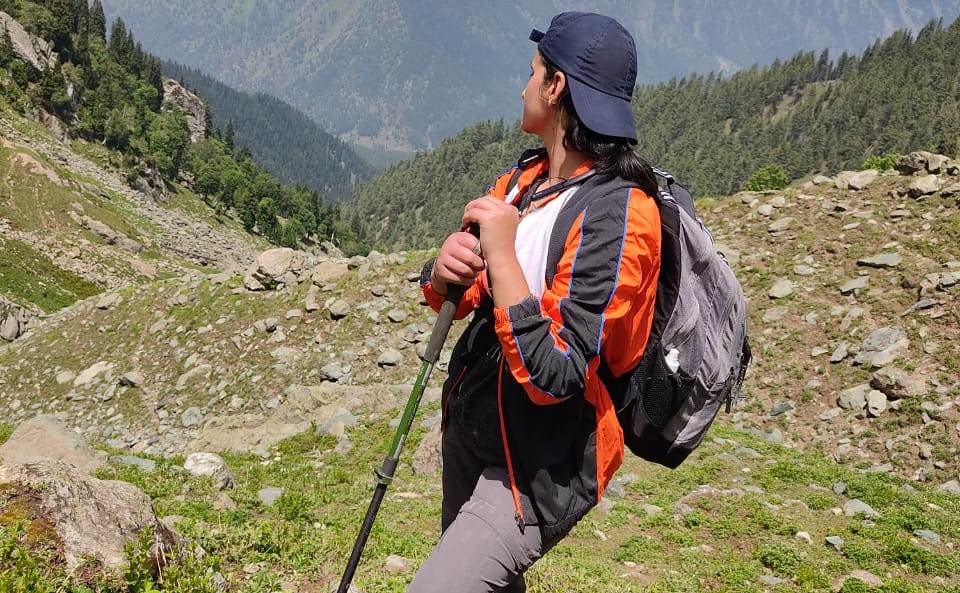
The Great Lakes Treks is a challenging but rewarding hike that starts from Sonamarg and ends at Naranag. Srinagar law student, Mustaqeem, 23, is a passionate trekker. He began trekking with his friends when he was still a teenager.
Trekking alongside the Harmukh group, Mustaqeem found himself surrounded by experienced trekkers, some of whom were celebrated figures in the trekking community. Despite his young age, he embarked on treks with these seasoned individuals.
Mustaqeem and his eight friends eventually constituted a new club early 2023. Interestingly, it has two female trekkers as members. “Our two female members will trek with us everywhere except on overnight expeditions as their families do not allow them,” he shared.
His club organises various trekking expeditions to different unexplored and remote areas of Kashmir. They invite participants through their social media handles. Usually, they take around 20 – 25 people with them but “if the inflow is higher, then we try to accommodate a few more,” he said. “All the club members are all adults but, “if anyone below the age of 18 wants to join, his parents have to submit a written declaration.”
All core members of his club are certified trekkers.
Not A Male Domain
Trekking is often seen as a male-dominated field, but many female trekkers are breaking the glass ceiling. Aneeqa Khalid, a resident of Srinagar, is one such trekker.
Holding a master’s degree in Social Work in Mental Health from Tata Institute of Social Sciences (TISS), Mumbai, Aneeqa started trekking in 2014 with a club. Her first trek was from Yusmarg to Doodhpathri. She was introduced to trekking by Adil Shah, one of the two Kashmiri trekkers who died after falling into a crevasse at the Kolahoi Glacier in Pahalgam area in 2018.
“Adil’s support for female trekkers was truly commendable,” Aneeqa warmly shares. “He used to actively advocate for more women to join the treks. His dedication to fostering a safe and inclusive environment has been instrumental in empowering countless women trekkers.”
Aneeqa, 26, now encourages women to get involved. She believes that trekking can be a great way for women to build confidence and connect with nature.
“It is incredible how trekking can propel you beyond your comfort zone, both physically and mentally,” she enthuses. “Engaging in this adventure not only allows you to discover your inner strength but also provides an opportunity to forge a deep connection with nature, unveiling the sheer beauty of the world that surrounds us.”
Initially, Aneeqa faced considerable challenges due to the absence of any space for women in the area. “At the time, encouraging more girls to join us was a formidable task,” she vividly remembers. “We consistently strived to find and welcome more women into the fold.”
Initially, Aneeqa encountered resistance from her parents, as they were apprehensive about her well being. “My parents had their concerns,” she reveals, “but over time, as they got to know the people I trek with and saw the positive impact it had on me, their reservations began to dissipate.”
Impressively, Aneeqa has completed 45 treks, both within and outside Kashmir. “Trekking has become a sanctuary where I can revel in solitude while savouring the joys of exploration and contemplation,” she shared.
Aneeqa’s leadership skills shine brightly as evidenced by her achievement in 2021 when she led an expedition to the formidable Eastern Pinncle of Thajiwas Glacier, an arduous undertaking in a remote locale. Guiding a team of three boys, she reminisces the experience as “challenging yet thrilling.” It demands “making tough decisions” and also “taking charge”.
Restorative Journeys
Another female trekker, Aqsa Ather of Rawalpora, has been trekking since 2017, when she went to Naranag. A Master’s in Psychology from the University of Kashmir, she discovered her passion for trekking through her love for nature. For her, trekking is a restorative journey that allows her to reclaim her depleted energy and experience a vibrant sense of being alive once more. She finds solace in the rush and the struggle that trekking offers, while the awe-inspiring views leave her breathless. “Words are insufficient to do justice to the emotions one encounters there,” she admitted.
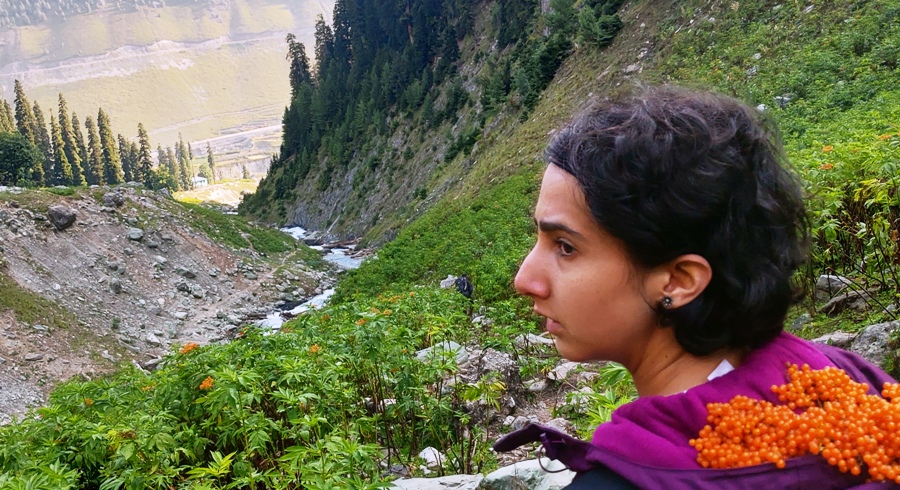
Despite her excitement about the day trek organised by the Jammu and Kashmir Mountaineering and Adventure Club (JKMAC), she understood that her family would not approve of her venturing out with a group of strangers.
To follow her passion without causing distress to her family, Aqsa decided to take a different approach. She decided to tell them that she was going on a college trek. “I informed my family that it was a college-organised trek, withholding the information about the independent nature of the group I was joining,” she recalled.
It was a difficult decision for Aqsa to lie to her family, but her love for trekking and the opportunity to experience nature’s beauty pushed her to take this path discreetly. Despite the challenges she faced in the process, she was determined to embark on the trek and explore the world beyond, cherishing the memories and personal growth that awaited her.
Aqsa went on the trek and had a great time. She was surprised to find that she was the only woman on the trek. However, she was determined to prove herself and she did not let her gender hold her back.
Aqsa chose to come clean and reveal the truth to her family immediately after descending from the heights. Despite her apprehensions about their reaction, she mustered the courage to share her experience.
Ecological Concerns
Zeeshan’s assessment of the trekking community in Kashmir highlights some critical areas that need improvement. The absence of essential elements like proper planning, trail and location information, environmental awareness, outdoor ethics, and wilderness first aid raises concerns about the safety and sustainability of trekking activities in the region.
Aqsa believes that efforts to encourage and support more female participation in trekking can lead to a more diverse and vibrant trekking community in Kashmir.
Recently, several videos have been circulating on various social media platforms, shedding light on the numerous remote and unexplored locations that have been polluted by certain hikers and visitors. After documenting the littered sites, the trekkers, who preferred to remain anonymous, took it upon themselves to clean up the mess off-camera.
Mustaqeem and Aneeqa’s commitment to eco-conscious inspires them to engage in cleanliness drives during their trekking journeys, helping to maintain the pristine beauty of the wilderness they explore. They encourage participants not to bring junk food.
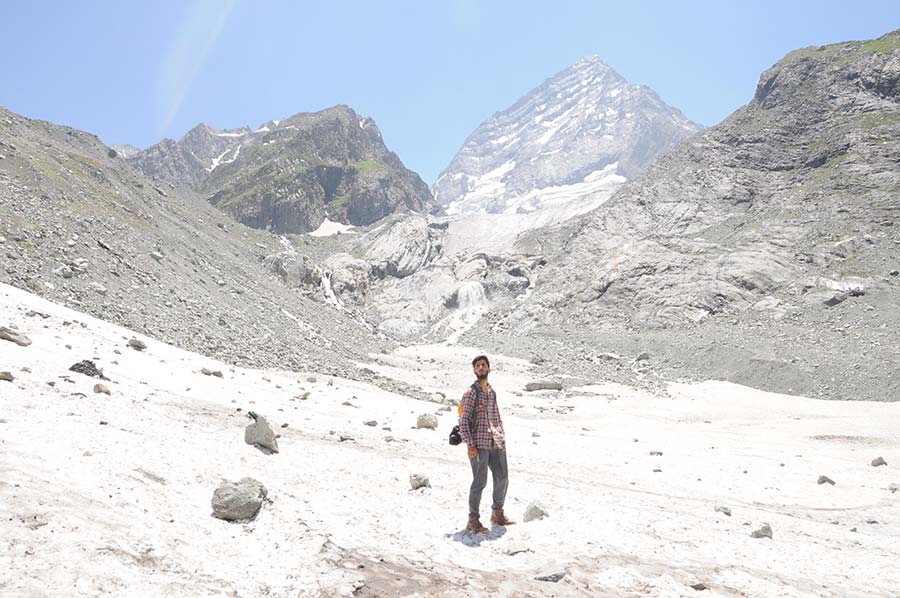
Aqsa is actively involved in cleaning campaigns, particularly focusing on Shankaracharya (Sulaiman Hills), “by collecting non-biodegradable waste and disposing of it responsibly, we are taking tangible steps to keep these areas cleaner than before” , she said.
The trekking culture in Kashmir extends beyond individual enthusiasts, encompassing various groups and clubs that have emerged over time. These trekkers have taken the initiative to form new trekking clubs and organise expeditions, contributing to the growth and popularity of this outdoor activity in the region.
Among the renowned trekking clubs of Kashmir are the Jammu and Kashmir Mountaineering Association (JKMA), Alpine Adventurers, and the Jammu and Kashmir Mountaineering and Adventure Club (JKMAC), which holds the distinction of being one of the first and oldest trekking clubs, established back in 1934. Other notable clubs include the Harmukh group and Kashmir Compass, each leaving its mark on the trekking community.





